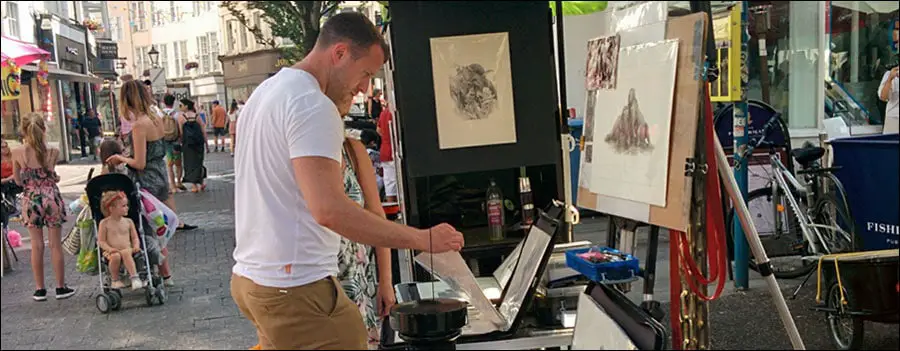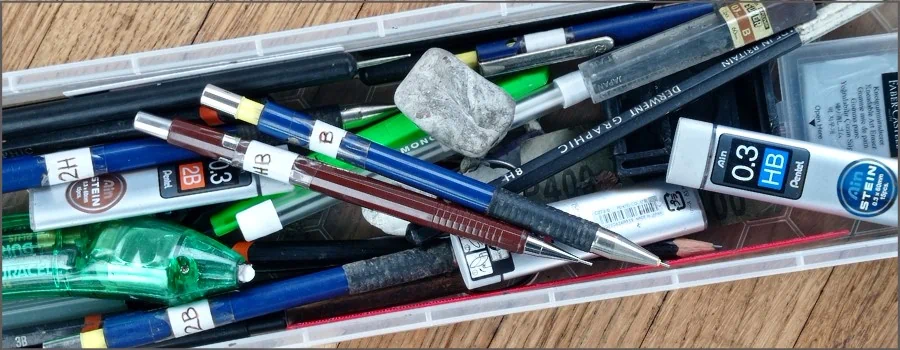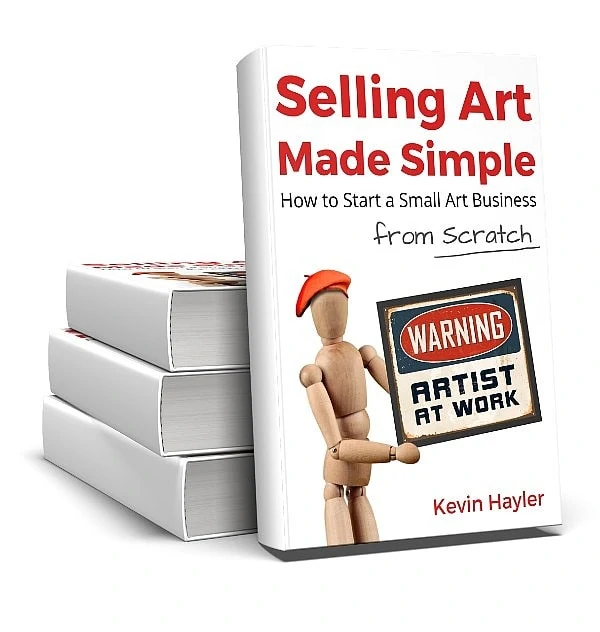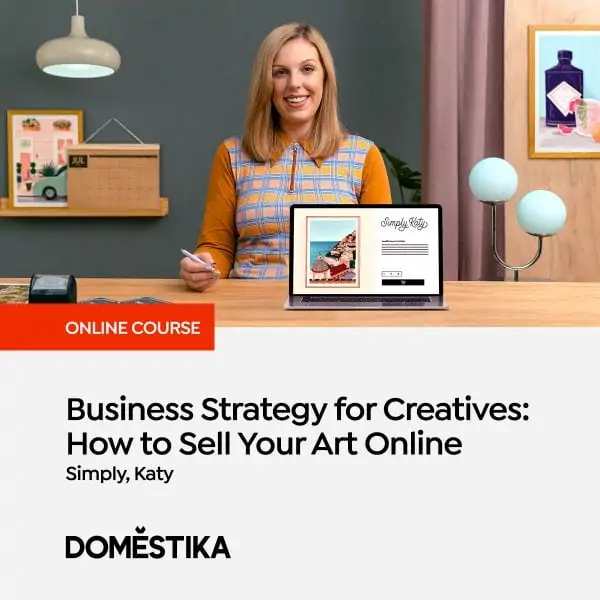Kevin Hayler: Professional Wildlife artist, author, and traveler.
Do you know who buys art? Recognizing how to spot an art buyer is an essential sales skill if you are going to succeed. You have to know these things:
Women are the best buyers of art. Young couples setting up home are keen to buy, students cheering up their rooms, parents buying art prints for their kids, middle-aged couples with more spending power will buy originals and anyone who’s buying a gift.
Of course, it’s more nuanced in real life. You must learn how to recognize patterns of behavior, body language, comments, and questions that signal interest. Class, culture, and education play their part too.
If you are able to spot the clues early on it allows you to focus on your genuine prospects and filter out the time-wasters. That’s what you learn by trading from an art market stall.
Let’s take a closer look
Disclaimer: When you buy something via my affiliate links I earn from qualifying purchases and sometimes earn a commission, at no extra cost to you. I am an Amazon Associate among others. I only recommend trusted sites.
Spotting an Art Buyer: The Positive Signs
Now you might be thinking the signs are easy enough to read but it’s not until you start trading that the real picture emerges. I’ll break the signals down into bullet lists with explanations.
Let’s look at a few positive signs of interest worth pursuing.
Opening lines that signify a possible sale:
- Have you got a card? (Don’t give it without saying ‘what were you thinking?’)
- Will you be here at the weekend? (Waiting for payday)
- Are they standard sizes? (Already thinking of buying one)
- Did you do these yourself? (Positive curiosity)
- Is that all they are? (More affordable than they assumed)
- Is that the only one you’ve got? (Afraid to lose out)
- Do you ever sell the originals? (Probably too expensive but might buy a Limited Edition)
- Do you know ‘so and so’ artist? (Already a collector/admirer of someone similar)
And behavior patterns:
- The sudden double-check (Instant hit, something resonates)
- Friends and couples who discuss your work (Consensus building to make the right choice)
- Eye contact and smiles (Expressing interest and approachability)
- The onlooker who sees you selling to someone else (Validation of worth)
- People who want to see everything (Fear of missing out and good for attracting onlookers)
- People who head straight in on a particular picture (Looking for the very thing you’re offering)
- People who are looking at your work and enjoy your banter (People who like you are likely to buy)
- Positive friends (Approval and testimonial makes a buyer feel secure)
- Parents who encourage their children to take an interest (Adults eager to buy for their kids)
Eventually, it becomes second nature to tune in to these signals.
Everything I know is in this Guide. Check it out.
Spotting a Non-Art Buyer: The Warning Signs
Who’d have thought that the people who lavish you with the most praise are often the least likely to buy your stuff? It’s so counter-intuitive, how would you guess beforehand?
Over-the-top praise should ring alarm bells, it rarely has any substance. Apart from being uncomfortable when it’s delivered to excess, empty praise is deflating and you end up feeling cheated.
There are signals that repeat time and again and it’s better to be aware of them. Forearmed is forewarned as they say.
These are a few opening lines that signal an unlikely sale:
- What pencils do you use? (Only wants a free lesson)
- Are you here all day? (Walkaways rarely return)
- I’m a fellow artist (Artists seldom buy art)
- Have you got a website? (Walkaway)
- I’ll come back after lunch (Walkaway)
- You should put your prices up (Experts are all talk)
- They’re lovely though.. (no thanks)
You’ll also notice patterns of behavior that give the game away too:
- People who flick through your work as if they are postcards (Dismissive, disrespectful)
- Half-smilers who refuse to engage (Reticent and non-commital)
- Couples or families who don’t talk to each other (No communication seldom leads to a sale)
- The negative friend (Critics are sales killers)
- Hands in pockets (Casual indifference)
- Bored husband or wife ( no positive confirmation, unlikely sale)
- People who refuse to touch anything (Indicates no commitment)
- People who are eating (Otherwise occupied and messy fingers)
- Smartphone slaves (Totally distracted, no attention span)
- Lack of teeth! (My own prejudice, I’m working on it)
These aren’t hard and fast rules, they are only guidelines that indicate how much effort to put into the pitch. As soon as you get cocky and think you ‘know’ how people behave, along comes someone who breaks all the rules and buys your artwork anyway.
To spot an art buyer you have to be at the show, and that means being prepared.
This is the best video I could find on YouTube about Selling in Art Markets
Know Your Art Buying Demographic
It’s no good getting upset by the thought of profiling people, you’ll soon discover preferences vary between people.
Ignore the differences and you will lose out.
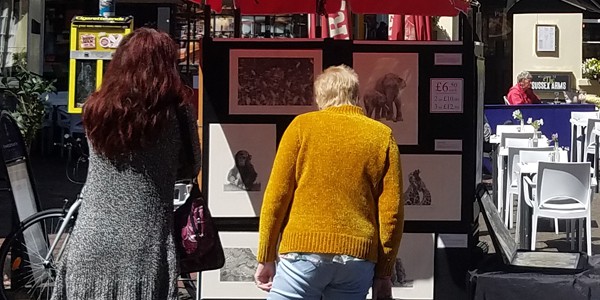
Who Buys Art, Men or Women?
There is no doubt that women are the best art buyers. On the whole, they have the final say about what hangs in the home.
If you want some more selling tips read this: How to Sell More Art: 10 Selling Tips For Artists
Design ideas, theming, and symbolism are female discussions.
I rarely hear guys discuss home decor, hanging in sets, or color schemes and they don’t tend to care about finding space on the wall, if they like it, they are happy to make room.
Men are also less inclined to put their foot down. If their partner likes something, it’s usually fine with them – ‘If you like it let’s buy it’. They can live with or without it!
Women seek consensus, BOTH partners MUST like the art if it is to hang in the home.
It’s women who like to choose subjects that match and women who consider the following:
- Arranging them in sets,
- Discuss odd or even numbers,
- Decide on portrait or landscape formats,
- Clashing colors,
- The size of the art,
- What frame is best.
It’s also women who like to see their families represented in the picture. I’ve yet to see a man disappointed because there are only 3 animals in a picture yet there are 4 members of his own family.
Men shop less but are easier to please.
It’s also true that gender stereotypes hold true when it comes to choosing subjects. Women, on the whole, choose softer, gentler pictures. Mother and baby images are very popular.
Men, on the other hand, will happily buy moodier imagery. Attitude doesn’t put many guys off, that’s not the case with women.
This is not just conjecture, it’s based on 20 years of my own direct selling experience and seeing the same things repeat, repeat, repeat.
What Age Are Your Art Buyers?
People of all ages will buy art as gifts so you can’t dismiss anyone as a customer based on age alone.
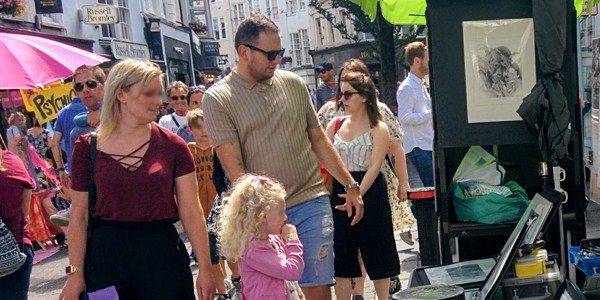
So who is more likely to buy art?
- Young couples setting up home
- Couples moving home
- Students cheering up their digs,
- Parents buying for their kids
- Middle-aged with more spending power.
Pensioners are downsizing and getting rid of their ‘stuff’, not unless they are buying a gift.
New Couples
Are a delight. They are nest builders. They want to please each other, they enthuse, and get excited. On the whole, they are positive and cheerful.
They are very likely to love what their partner loves. They end up agreeing!
If they like your work they act as inadvertent cheerleaders for attracting curious onlookers and subsequent follow-on sales.
Couples Moving Home
When couples are moving up in the world and can afford to move home, and maybe start a family, they look at filling wall space.
They now have the kid’s room to decorate, a new hall, and stairways. More rooms mean more art space.
Consensus between settled couples is, however, a tougher call, and making a decision is more difficult. The gender differences are now more apparent.
Students
Don’t have money to burn but they do want pictures on the wall. I sell affordable prints that fit the market well. Their choices are less concerned with obvious aesthetics and more likely to reflect their passions.
This is the age group that will actually buy ‘statements’ – weird.
Parents
Parents buy pictures for their kids. While I don’t actively sell to children for ethical reasons, make no mistake I do try to attract them. They are the most engaged audience of all. With or without a sale, they are often my most rewarding encounters.
Kids love art and, in my case, animals, and with this in mind, I display my art down at ground level to catch their eye.
I never ignore kids. As long as the parents are aware, I will answer their questions, demonstrate techniques, and explain what I do. Never underestimate the value of pester power.

Comfortable Middle-Age
When the kids have left home, the mortgage is paid off, and there’s the time and money to indulge in hobbies and interests.
People in this age bracket have the security to spend more freely. Throwing a few notes down is a more casual affair. They begin to appreciate the finer things in life, and for some that includes art.
This age group likes to buy presents for their families. Their kids are setting up new homes and they have grandchildren to spoil
They are also more likely to buy originals and Limited Editions.
Art Buyers and Cultural Differences
Culture makes a difference. On the whole, the Northern European, Nordic and Anglo-Saxon cultures have very similar tastes. Each country will have its own iconic national animal or bird but the general top ten favorites will be almost the same.
They tend to share the same high regard for wildlife and collect iconic animals in a similar way.
Check these out:
- 12 Wildlife Art Bestsellers (Use These Subjects to Make Money)
- 7 Bird Art Bestsellers: Best Wall Art Selling Guide
- 9 Farm Animal Art Bestsellers: Home Decor That Sells!
- How Do Artists Find a Target Audience? The Best Tips!
I find Germans and North Americans are particularly keen and good spenders.
I rarely sell to Italians. They talk but seldom buy. They display less interest in animals than their Northern counterparts and are more careful with their money. You would think that art would be in their blood but maybe it means they take it for granted, who knows? All I do know is they are not my market.
The Spanish in contrast, a Latin culture not really famous for their love of animals are enthusiastic customers. Go figure.
The Chinese will buy animal art but they do have a few national quirks. I have to make it very clear from the start that I am selling my prints and not the originals. Considering my prints start at less than $10, this is perplexing but the confusion occurs almost every time. Many Chinese walk away upon realization, but those that stay can be very good art buyers.
I don’t do well with Middle Eastern customers, on the whole, they are confused as to why I want to draw wildlife.
Indians like their wildlife. Animals are entwined into the religion and culture of the sub-continent and so by the way, is haggling!
These are only generalizations of course but worth taking into consideration.
Art Buyers and Disposable Cash
It’s the bottom line, how much money can your customers actually afford to spend?
Don’t kid yourself that art is anything more than an indulgence. It’s way down the list of people’s priorities.
Obviously, if you live and work in a working-class area your work will command less than the same work sold in a middle-class area.
I trade in a tourist seaside town. My passing trade is predominantly working-class and I price accordingly. It may look continental with alfresco restaurants and live music but it’s a veneer. In reality, it’s all about ‘fish n’ chips and burgers’.
If I worked in a farmers market in a more affluent town I could doubtless put my prices up but then again my costs would be higher too.
Would I gain that much? Maybe, but the higher overheads have to be factored in.
I’m generalizing of course. Not all working-class people are hard up and not all middle-class people are flush. But…
Give me a middle-class audience any day. They are more interested, polite, and engaged.
Read The Body Language of an Art Buyer
We communicate with each other in more ways than one. We read each other through our facial expressions and our body language.

We are wired to talk visually.
Some of us are more conscious than others and some are totally oblivious. Who hasn’t recoiled from the guy invading your personal space?
Let’s look at a few examples in a sales context that indicate the positive and negative signals people reveal about themselves with body language alone.
People who are not interested tend to:
- Stand with folded arms
- Stand sideways to your work
- Keep one step back and lean over
- Avoid eye contact
- Stay on their phone
- Carry on eating/drinking
- Try to hide from your view
People who are interested tend to:
- Step closer
- Turn to face the work square on
- Read the bio and captions
- Smile and make eye contact
- Touch things
- Examine
- Put on their reading glasses.
After trading for a while you will come to recognize familiar patterns of behavior and all these subtle indicators will become second nature.
When you become fully aware of the potential sales opportunities walking by your stand, your senses will sharpen, you’ll notice yourself beginning to duck and dive, and then before long, you’ll develop the classic Traders Twitch!
Before you disappear, learn how to tell a good story, selling is all about communication. This is a very informative class and Sun Yi will show you how to construct a ‘hero’s journey’ for your bio.
If writing daunts you, listen to Sun Yi and learn how to tell your story with ease. Find his class on Domestika
Who Buys Art? Final Thoughts
The more you know about the way people behave and the signals they give away, the more you’ll be able to read each encounter and focus your efforts profitably.
Once you recognize who buys art, and why they buy it, you can adjust your approach to meet their needs and yours.
Here’s to art buyers everywhere.

If you like the way I draw and want to try things for yourself, this is my basic kit
Knowing how to spot an art buyer is crucial but there’s so much more you need to know. I’ll show you what to do. Step-by-Step!
If you found this article useful you may like these too:
- Write an Artist About Me Page: A Great Bio in 4 Easy Steps
- Is It Okay To Draw in Public? – The Experience of an Artist
- 10 Best Ways to Sell Your Art Locally: Mega Guide
- How to Sell Art on The Street: By a Street Artist
- Can You Copy Art and Sell a Painting of a Painting? I Found Out
- How to Make Prints of Your Art – Printing Art Explained in Detail
- How to Negotiate the Price of Your Art Prints and Make Money
- How to Get Art Commissions: The Easy Way and Make Money
Get to Grips with your Art business with Katy on Domestika
PIN IT AND SAVE IT
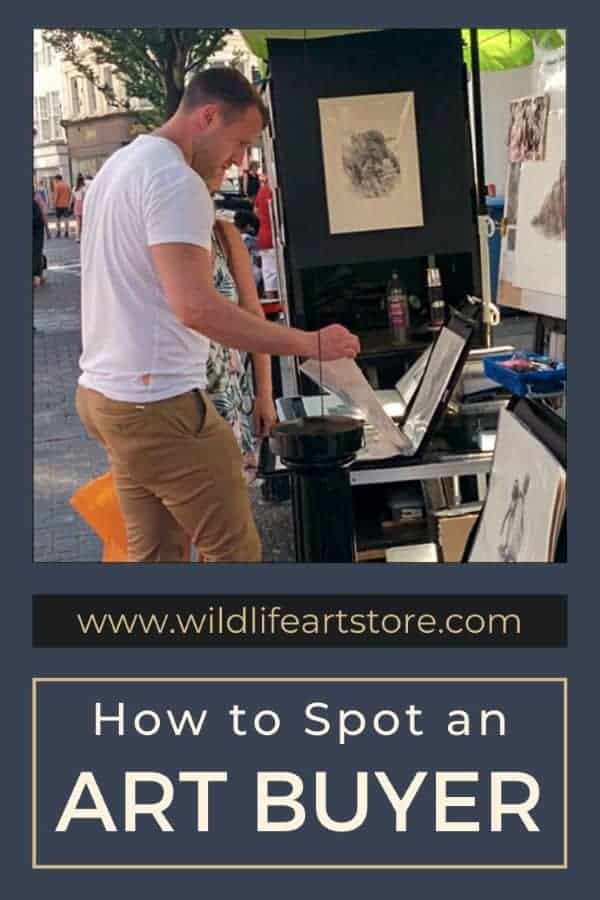

Hi, I’m Kevin Hayler
I’ve been selling my wildlife art and traveling the world for over 20 years, and if that sounds too good to be true, I’ve done it all without social media, art school, or galleries!
I can show you how to do it. You’ll find a wealth of info on my site, about selling art, drawing tips, lifestyle, reviews, travel, my portfolio, and more. Enjoy

